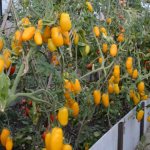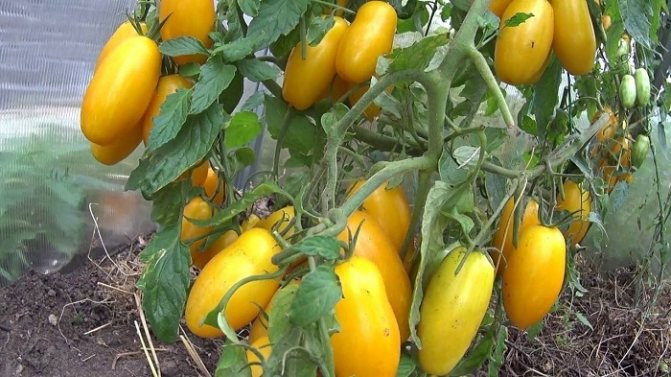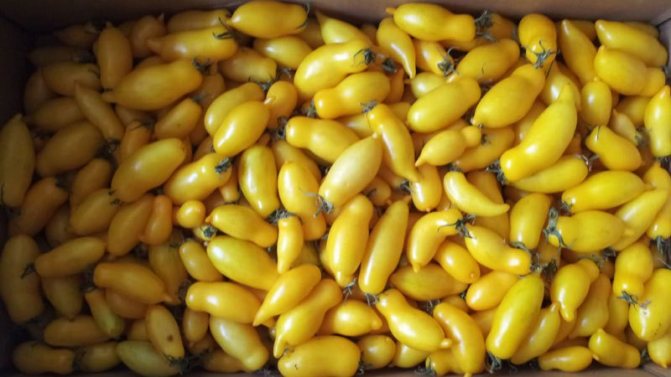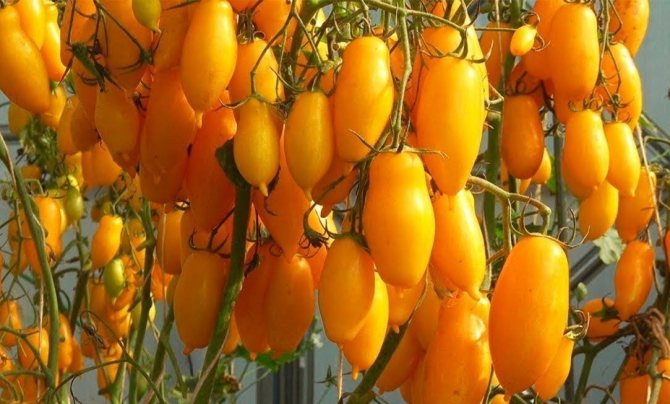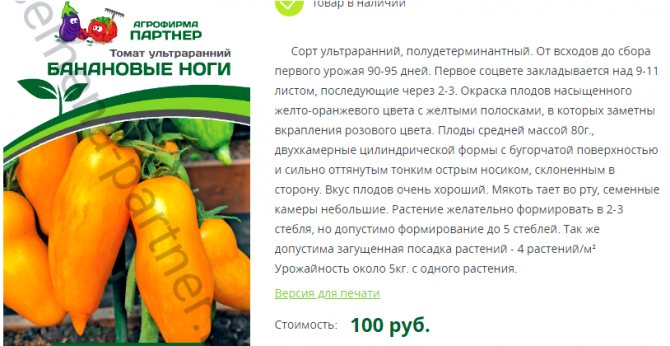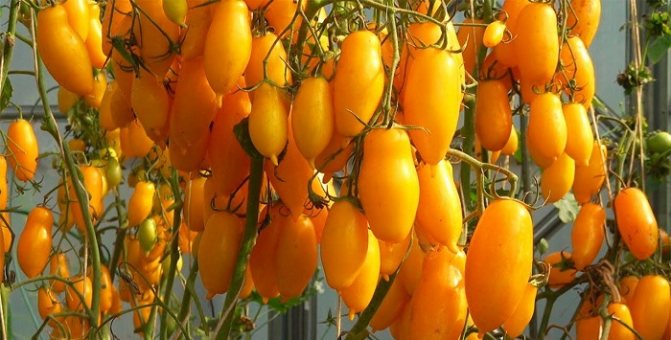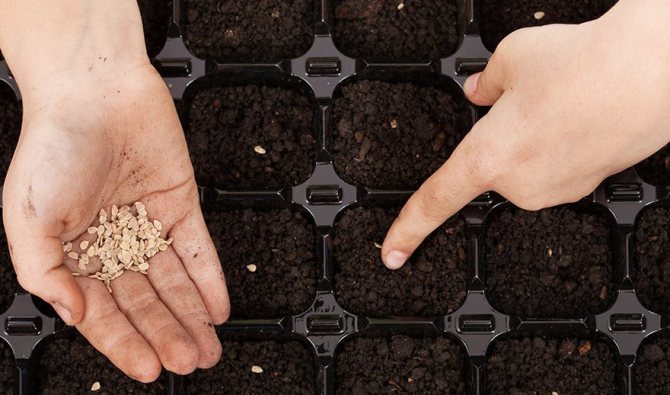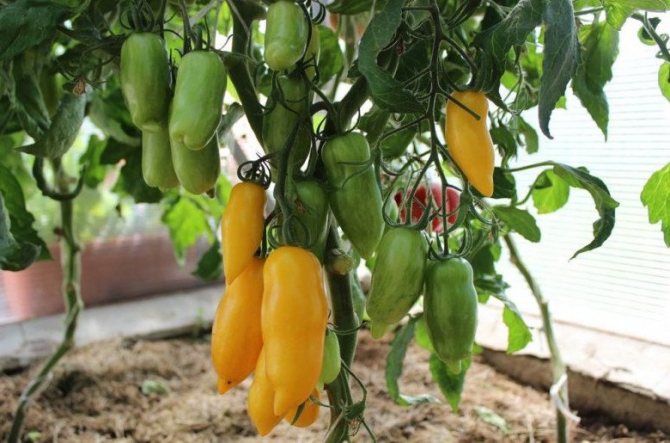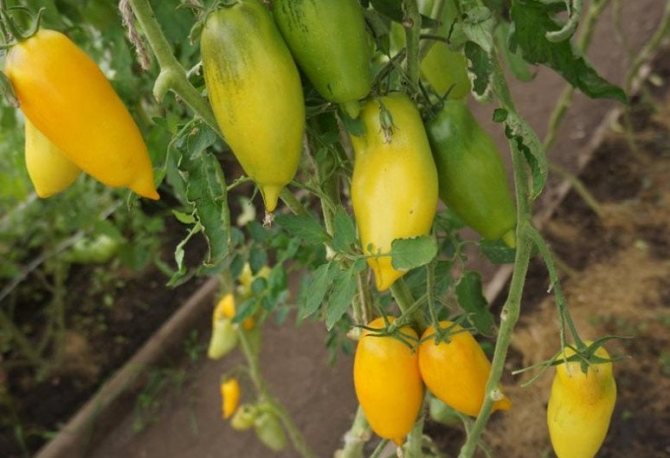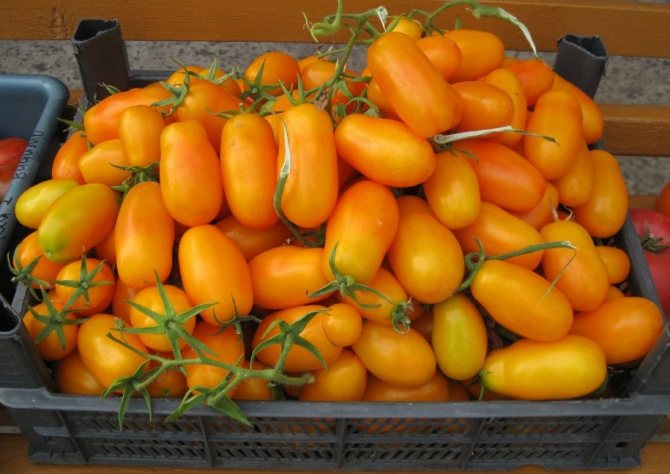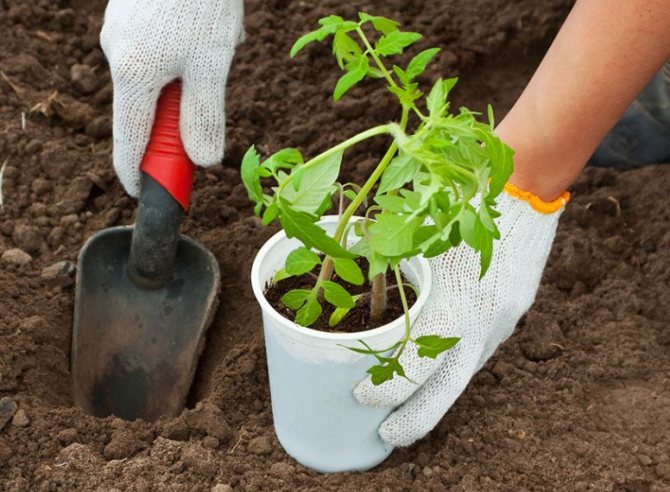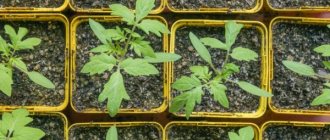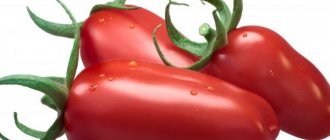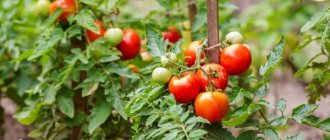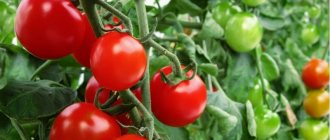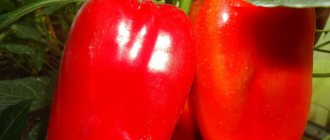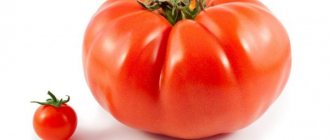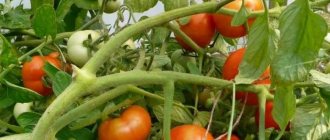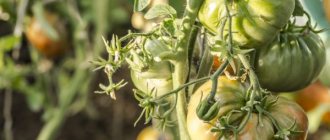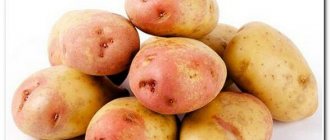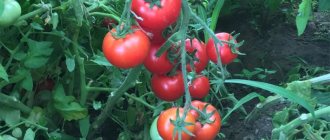Tomato Banana Legs caused a huge amount of controversy. Perhaps not a single variety was discussed so violently. The interest of summer residents was aroused by a video shown on one of the garden YouTube channels. A video appeared on it with tomato bushes strewn with fruits. The yield of the presented variety seemed incredible. Of course, looking at such a miracle, many summer residents began to look for the seeds of these tomatoes. And as soon as the opportunity arose, we also purchased seeds for the store. In the last article, we talked about the experience of growing tomato Mongolian dwarf, the seeds of which are practically not on sale. And in the case of Banana Legs, the seeds are on sale, so we can draw conclusions based not only on our experience, but also on the feedback from customers of our store. We analyzed a large number of reviews about the Banana Legs tomato variety. Reviews of real gardeners.
| Buy 10 seeds - 40 rubles | Information about practical cultivation experience tomato varieties Banana legs in the conditions of the Nizhny Novgorod region provided by the owners of the nursery and shop "Fazenda" from Dzerzhinsk... Recommendations are made based on their experience and customer reviews of our store. We accept orders and consultations through the group in "Odnoklassniki", please! |
Tomato banana legs: characteristics and description of the variety
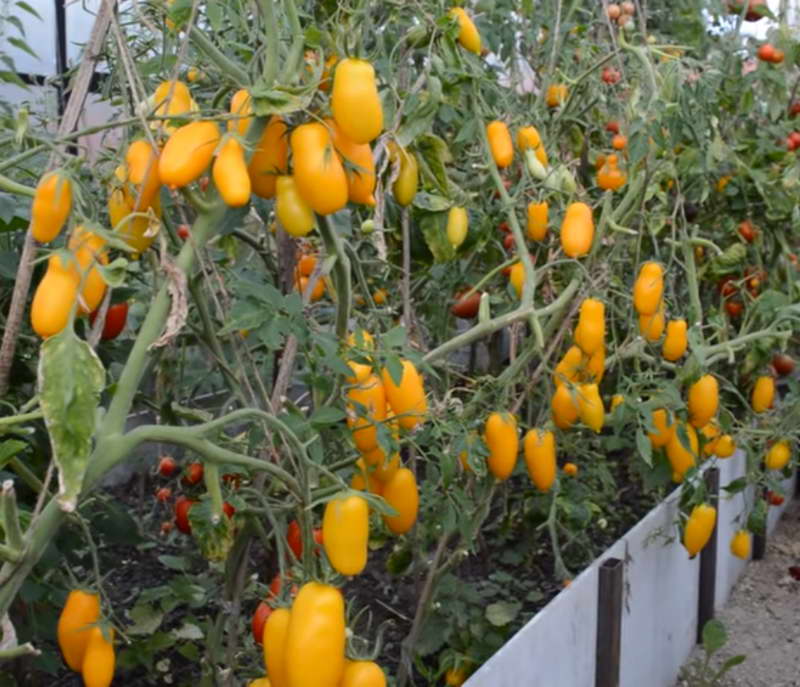
Tomato banana legs description of the variety photo of the fruit
American breeders presented the Banana Legs variety to the world back in 1998, and during this time yellow tomatoes have gained great popularity far beyond America's borders, and now they are becoming "favorites" in all regions of Russia from the southern district to Siberia and the Urals. This is not surprising: the variety is quite unpretentious in care, but it gives excellent yields in a variety of growing conditions.
The variety is semi-determinate, very prolific, requires pinching, a garter is needed, medium ripening: 90-96 days pass from germination to the first harvest. Fruit ripening is amicable, up to 7-9, sometimes 13 fruits ripen on the brush. The height of the bush when grown in open ground reaches 0.8-0.9 cm, and in film shelters and greenhouses - up to 1.5 meters.
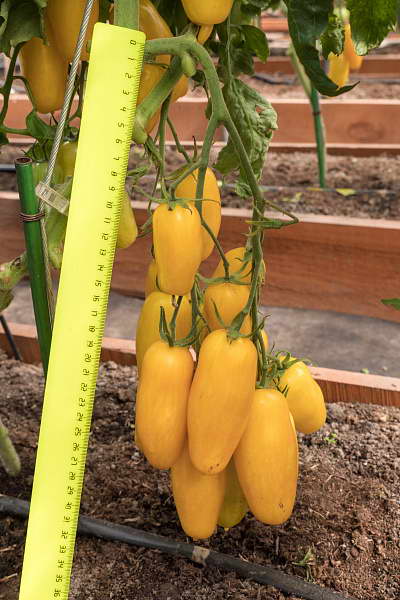

The first inflorescences are formed above 7-11 leaves, and all subsequent ones - after 2-3 leaves. If desired, especially if grown in a greenhouse, plants can be grown in 2-3 stems, in the open field - in 4-5 stems. Disease resistance allows you to practice the thickened planting method, planting 1 sq. M. up to 5 plants.
Fruit characteristics
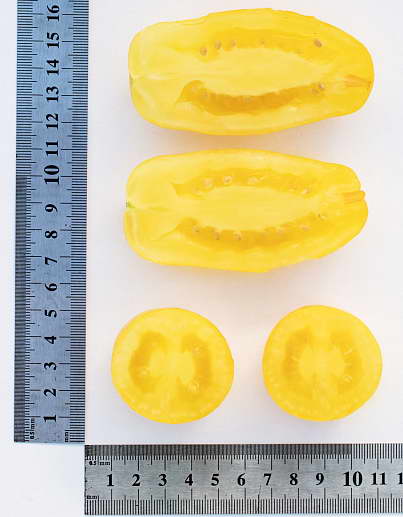

Tomato banana legs characteristics and description of the fruit
Fruits are bright yellow in color with a slight shade of orange. The shape is an elongated cylinder with a sharp nose, which has an inconspicuous inclination to the side. The pulp is tender, sweet, melts in the mouth. The seed chambers are small, there are only two of them. The average weight of one tomato is 80 grams, individual fruits can reach 100-110 grams. A salad-pickled variety, has excellent fresh taste, a very tasty juice of an unusual shade is obtained from it, and generally pickled tomatoes do not burst and retain their shape.
The yield of the tomato variety Banana legs is high: about 5-6 kg are removed from one bush in the open field, in greenhouses - up to 7-8 kg.
Advantages of the tomato variety Banana legs
The advantages of the variety include:
- Excellent adaptation to various conditions, endurance in hot and cold conditions.
- Amicable, massive ripening of fruits.
- Excellent presentation, uniform size.
- It tolerates transportation well, the fruits do not crumple or burst.
- Dessert sweet taste, firm fleshy pulp.
- The possibility of growing in the open field and in the greenhouse.
- In the southern regions, it can be grown in a seedless way.
- Fruits can be removed unripe, at room temperature they ripen perfectly without losing their taste.
- Versatility: suitable for fresh consumption, for pickling and for the production of tomato juice.
Description
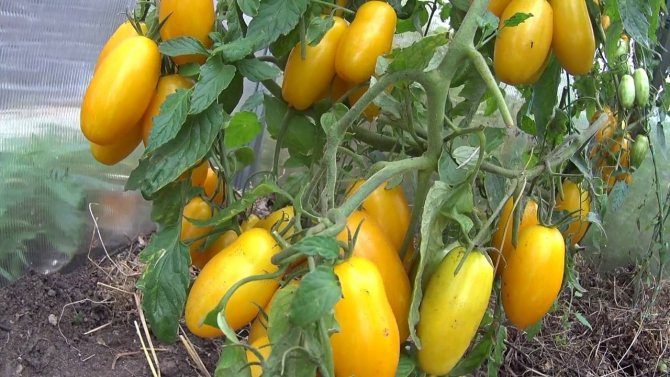

On one fruit cluster, about 7-12 tomatoes are formed, mostly amicable ripening. The length of each specimen is about 8-12 cm. The flesh of the fruit is fleshy and tender inside, with very few seeds, the rind is quite strong. This tomato is intended for canning, fresh salads, perfectly tolerates significant transportation (harvesting in an unripe form).
Varietal merits:
- Excellent productivity;
- Undemanding to the place of growth;
- Good taste and canning qualities;
- Possibility without seedling culture;
- Good disease resistance;
- Easy adaptation to the local climate;
- Very original taste, color and shape of the fruit.
There are practically no drawbacks, or they are possible due to a gross violation of cultivation techniques.
The variety is exotic and is in high demand among vegetable growers because of its name and fruit shape. Perfectly grown everywhere, from the southern regions to the middle zone.
Disadvantages of the variety
Many may consider the disadvantages of the variety:
- The need for regular pinching so that the bush does not thicken and yield does not decrease.
- The need for a garter.
- Long whip-shoots that do not look very attractive against the background of a small number of thin leaves.
- Long fruit setting. However, this is a subjective sensation, after setting the fruits actively grow and ripen together in large quantities.
- There are few seeds in the seed chambers; to obtain seed, a large amount of tomatoes must be processed into juice.
This yellow cream may seem strange and unusual to you, but on close acquaintance, you will certainly fall in love with its waywardness!
How to grow seedlings on a windowsill
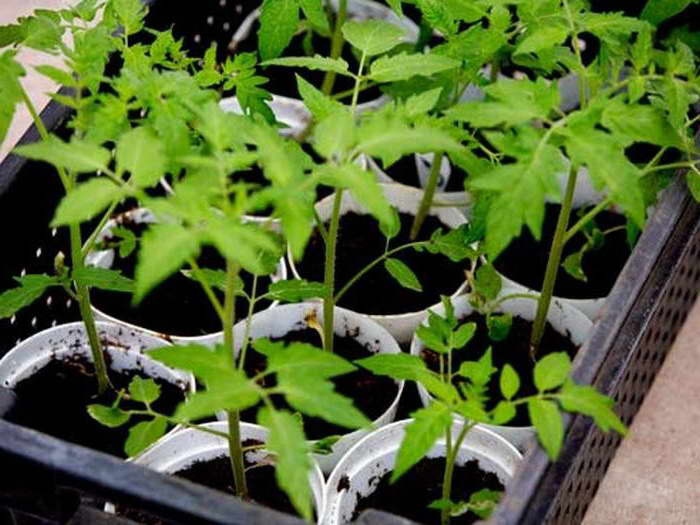

Many people ask: tomato banana legs when to plant for seedlings? We answer: you need to plant seeds for seedlings 55-60 days before planting in the ground. For growing seedlings, you can use universal soil and seedling cassettes. We plant one seed in one cell: seed germination is excellent, so there is no need to worry that the cassettes will be half empty. We deepen it by 0.5-1 cm, making the "hole" a match, and sprinkle it with earth, pressing lightly.
It is important that the seeds are well covered with soil, otherwise, during germination, the seedlings may not get rid of the seed coats, which will create additional problems and slow down the growth of plants (in some cases, you even have to remove the shell by hand, but there is a risk of damage to the cotyledon leaves).
Water the sown seeds and keep them at a temperature of 20-22 ° C, do not allow excessive heat, otherwise the seedlings will stretch out. It is also important to provide seedlings with long daylight hours and bright illumination. If the weather is cloudy, be sure to light up the seedlings, otherwise the yield of the future garden will decrease.
The grown seedlings will need to be transferred into larger cups so as to deepen the stems to the first true leaves. So you will stimulate the growth of lateral roots and by the time of planting in the ground, you will get luxurious seedlings with large, dense roots.
Temper the plants a week or two before planting by taking them outside. First for 1-2 hours, then longer.When the seedlings can spend the night outside, they are ready to plant.
Growing tomato
- First you need to think about where you will sow seeds for seedlings, and then prepare this place. For a small vegetable garden, it will be enough for you to plant seedlings in a greenhouse, which you can build yourself.
Helpful! To build a greenhouse, you will need to take 5 half-bent iron rods, 1.5 meters each, thick film (2 × 3 m.). Take the rods and stick them into the ground to a depth of 10-15 cm. The distance between the rods is 20-25 cm. You should get a greenhouse no more than a meter in length. After the rods are installed, you need to take the film and stretch it over the entire surface of the greenhouse. The edges of the film are buried with earth so that there is no draft. On the one hand, the edges are dug in less so that you have access to the seedlings.
- The tomato loves loose soil. To achieve friability, peat or rotted sawdust is added to the soil. For a small greenhouse, you need 7-10 kg. peat.
- The soil for seedlings must be disinfected. A solution based on potassium permanganate is proven. With one percent potassium permanganate, spill the soil a week before planting the seeds so that all bacteria die.
The use of the drug "Trichodermin" will allow disinfecting the soil and increasing the beneficial microflora. The solution is prepared at the rate of 1 gram of substance per 1 liter of water. The soil is watered or sprayed abundantly.
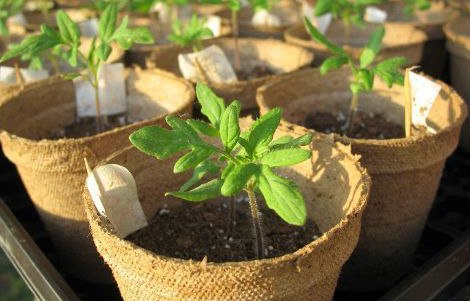

- Before sowing, seeds can be soaked in a solution based on 3% hydrogen peroxide. Take a bottle of peroxide 3%, heat the liquid to + 30 ° C, place the seeds in the solution for 10 minutes, then dry them.
An inexpensive way to protect seeds from bacterial diseases is to soak them in aloe juice. You will need aloe sprigs that have been lying in a dark place for a week, grind them into gruel and add water. The ratio of aloe juice and water is 1 to 1. Soak the seeds throughout the day.
- Planting material is sown in a well-heated greenhouse to a depth of 1-2 centimeters. The air temperature should be at +25 degrees.
- Water the seedlings with warm water every two to three days. The soil must be monitored, it is not worth overmoistening it strongly, so as not to provoke decay of the roots.
- Plants are planted on the garden bed upon reaching 65-70 days from the moment of seed germination.
- An hour before planting seedlings, holes are prepared. Make small holes, water them abundantly, add mineral fertilizers (1 teaspoon per well). One plant is placed in each well.
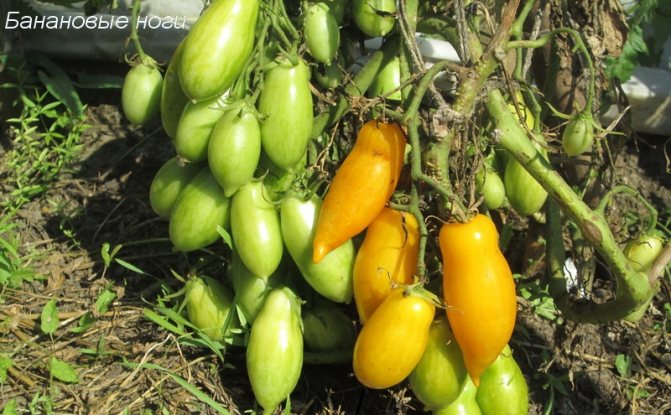

- Tomato will be taken for a week at best. After that, you need to immediately install the support, so as not to damage the roots later.
- Form the tomato into 2-4 stalks. Plants must be pinned and tied to a support.
- Water the culture with settled water every 5-6 days. So that moisture from the soil evaporates less, it is recommended to mulch the soil. Covering the soil will preserve the thermal balance of the soil, the roots of the plant will be more protected.
- Top dressing is carried out with complex fertilizers (10 grams per plant) or organic fertilizers (fresh mullein, diluted in water, with which the tomato is watered at the root).
- Weeds should not be allowed to grow. For the entire growing season, the beds must be weeded at least 3-4 times.
- For the plant to feel better, you need to loosen the soil so that the root system is saturated with oxygen.
- Ripe fruits are harvested when they turn bright yellow and slightly soft to the touch.
How to grow seedlings in a greenhouse
Do not be afraid to grow seedlings under a film cover! It is much easier than fooling around in indoor conditions, while the seedlings are stronger and more hardy.
- Cover the arches with plastic wrap and let the greenhouse warm up.
- A week later, we begin to sow: we make rows at a distance of 20 cm, up to 5 cm deep. When we close them, the planting depth will be 2-2.5 cm, which is quite acceptable for an open tree.
- We sow less often, ideally - after 5 cm. If it turns out thicker, later it will be necessary to break through the seedlings.
- After sowing, we close the rows with a rake, water, cover with foil.
- Then for 1-2 weeks, you just need to monitor whether the greenhouse is overheated and whether the earth is dry. You need to understand that excessive dampness will provoke a black leg disease, and excess heat and dryness of the earth will lead to the death of seedlings. Therefore, poke your finger into the ground: if it is damp at the top, you can not water it. And when more than 1 cm begins to dry out, you need to water.
- Grown up shoots break through, leaving a distance of 5-7 cm between plants, weed from weeds.
- To stimulate the growth of the lateral roots, add the row spacing and the space between the tomatoes to the height of the first true leaves. Then pour.
In the future, it is advisable to feed the seedlings 1-2 times with nitrogen fertilizing or chicken droppings. When the seedlings grow to a height of 10-15 cm, they can be safely transplanted to the garden bed. Water the nursery abundantly, and after 1-2 hours you will be able to tear the seedlings with your hands, holding them by the legs.
How to plant seedlings in the ground
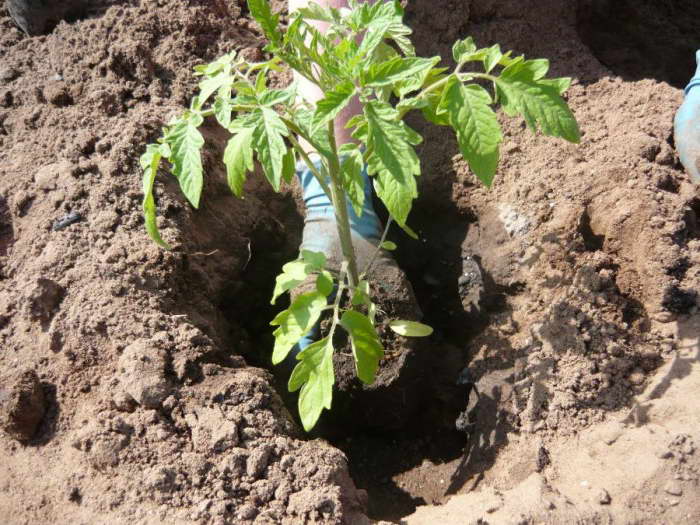

As already noted, the Banana Legs tomato variety is resistant to diseases, and tolerates a thickened planting of up to 4-5 plants per square meter. Therefore, you can plant bushes in a row at a distance of 35-40 cm.Leave the row spacing as you like, but not less than 0.5 m.
We make the holes in advance, pour a handful of humus or compost, water, and plant the seedlings one at a time directly into the mud. This method of planting is the most gentle for the delicate roots of young plants. After planting, water a little. Until the seedlings take over, water it daily, in the afternoon heat.
Diseases and pests
The variety is extremely rarely affected by diseases and pests. On the one hand, this is due to high immunity, on the other, early fruiting. Tomato and late blight are not terrible. Nevertheless, prophylactic treatment with Fitosporin solution will not hurt. Otherwise, the preventive measures are usual - cleanliness in the beds and maintaining a dry microclimate in the greenhouse.
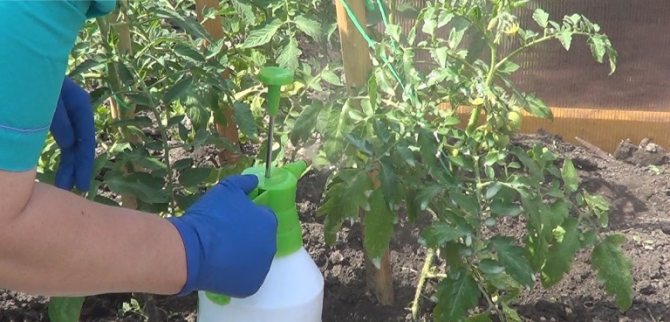

Why Do Tomato Banana Legs Curl Leaves?
In a variety with thin, almost lacy leaves, leaf plates often begin to curl. The main reasons are late blight and fattening of tomatoes. Banana legs. If there are no black or gray spots on the leaves, then most likely the reason is in the latter factor. Confirmation will be fleshy, green stems, the formation of a large number of shoots and small tomatoes that ripen for a long time. Reasons: excessive feeding and watering, lack of lighting. The way to fight is to identify and eliminate the causes.
You can find out more about the Banana Legs tomato in the prepared video:
How to care
Caring for a tomato Banana feet differs little from the standard rules of agricultural technology. It is important to remember that tomatoes cannot be tolerated when poured over. Therefore, do not overdo it: water abundantly, but not more than 2-3 times a week. After watering, it is advisable to loosen the soil the next day. This traps moisture in the ground and makes the soil breathable, which tomatoes love very much.
Mulching the beds with cut grass or straw is a good way to reduce the amount of watering and loosening. But the layer must be at least 5 cm, otherwise weeds will break through the mulch.
10 days after planting the seedlings, you can carry out the first feeding with a nitrogen-containing fertilizer, and after 2 weeks - with a complex fertilizer (for example, nitroammophos or an infusion of chicken manure fermented with grass). Read more about feeding tomatoes here and here.
It is important not to forget about the timely pinching of the bushes. Decide how many shoots you will lead, and remove all intermediate stepchildren in order to increase the yield of the bushes.
How to pinch tomatoes, see the video:
Hardworking gardeners are very pleased with the harvest of the Banana Legs tomato, and the kids are delighted with it. Try to have such exotic in your garden, you will not regret it!
Features of growing and care
Tomatoes need standard supervision, with timely watering, weeding, and loosening. Professionals recommend organizing a drip type of soil moistening on a tomato plot, mulching the soil around the bushes with straw or mowed grass.
Seedling and seedless method
- When planting seedlings
Seed material must be planted in the period from 65 to 70 days before the time of sending the seedlings to the greenhouse. The seeds are slightly moistened and sent to a potassium permanganate solution for 3 hours.
They are planted in pre-prepared and moistened soil in boxes every 2 cm, observing a gap between rows of 5 cm. Containers covered with foil are sent to a room with a temperature of 20-22 degrees.
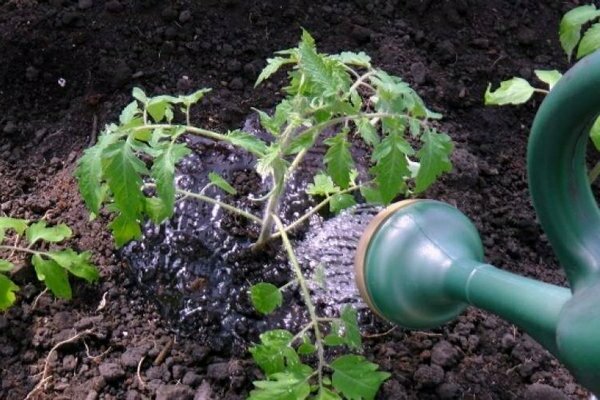

Watering young tomato bushes
After the sprouts appear, the containers are transferred to a room with a temperature regime of 15 degrees and sufficient lighting. A pick is carried out with the development of 2-3 leaves, young plants are transplanted into separate cups. After the procedure, they begin to be fed weekly, and after 65 days they are transplanted into a greenhouse or open ground.
- When planting seed material
Tomato Banana legs: reviews of gardeners
Ekaterina Goryacheva, Yekaterinburg
We bought seeds the year before last, grown in a greenhouse. What can I say, I first encountered yellow cream. The harvest was good, almost all the tomatoes were devoured fresh. Therefore, it was not possible to evaluate from in the blanks. I barely managed to collect some seeds, there are very few of them in tomatoes. This year we will plant again, the seedlings are already growing.
Olga Kartavtseva, Tula
I think they have a B's of taste, but the unusual color and good yield outweigh this fact. I liked the tomato very much. At first I doubted whether it was worth it: yellow tomato juice, you know, it's somehow strange. But in winter, oddly enough, they drank it first: very tasty. Tomatoes Banana legs made me stomp, of course: I did my stepson and tied it up. But when she was harvesting, and the neighbors looked over the fence, I felt pride)

